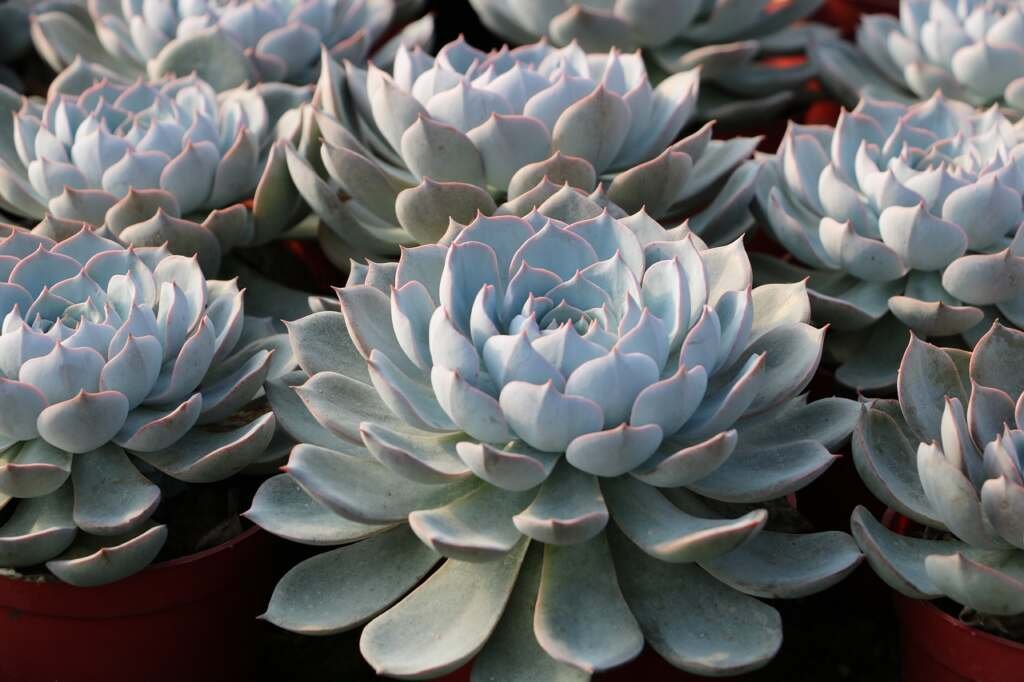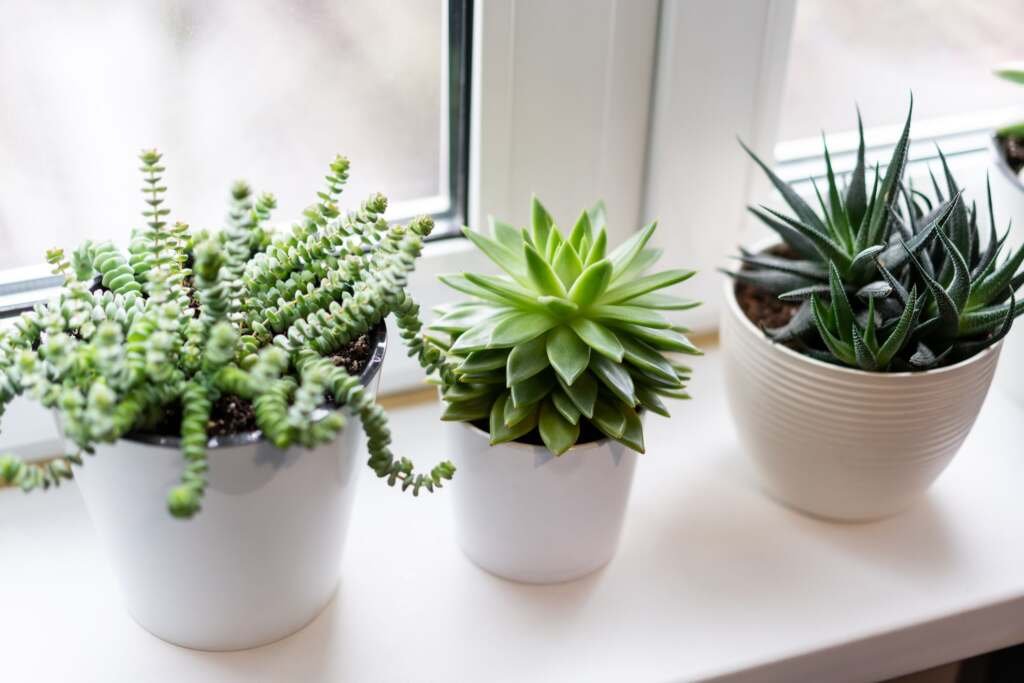HOW TO HELP SUCCULENT GROW FASTER

Succulents are endearing evergreen houseplants that do not require a lot of care. Most succulents are compact slow growers, and they stay neatly in their shape without frequent pruning. However, if you enjoy seeing new growth, succulents are there to test your patience, because it would take months or years to see a significant change in your succulents’ size. Even fast-growing succulents are so much slower to grow when compared to other plants.

Most succulents are compact slow growers
Despite the fact that all succulents are slow-growers, their growth rate is still affected by several factors which include: your climate area, the growing environment, and the type of succulents themselves. Although it is impossible to change the pace of growth in succulents, there are some tips and trips you can apply for all species to keep them healthy and boost their development. If you want to know how to make your succulents grow a little faster, read on!
ALL ABOUT SUCCULENTS’ GROWTH RATE
Although some succulents like Echeverias, Kalanchoes, and Aloe Vera do have a rather faster growth rate, succulents are generally slow-growing species. There is nothing you can do to turn a naturally slow-growing plant into a fast one.
Weather and climate significantly affect succulents’ growth rate, especially if they are planted outdoors. If your succulents are not suitable for your climate area, they won’t grow as fast as they should and may not reach their potential size. Extreme weather (too hot or too cold, too dry or too humid) can stunt your plants’ growth or cause diseases and other problems. Succulents do best in mild and warm temperatures, low humidity, and airy, lit spots with plenty of bright light.
Succulents have their own growing season. Most succulents grow fast during spring-summer and go dormant in the cold winter. Some like the famous Christmas Cactus, on the other hand, enter their dormancy in fall and spring. During dormancy, it is not possible, and not advisable to encourage new growth.
HOW TO MAKE SUCCULENTS GROW FASTER
Give your succulents an ideal growing environment
This seems obvious, but it is still important to emphasize that your plants can only grow fast when they are healthy and have the best growing environment. An ideal growing condition for succulents includes an airy spot with a stable temperature between 65 to 80 degrees Fahrenheit and a humidity level of around 40%, away from cold drafts and heating sources. Most succulents cannot stand freezing temperatures and scorching afternoon sun, so keep them away from harsh direct sunlight and move them indoors when the temperature drops below 40 degrees Fahrenheit.
Succulents need a lot of bright light, and they thrive with at least 6 hours of light daily. Lack of lighting can stunt growth and make your succulents leggy. For many sun-loving succulents like Agave, Aeoniums, or Senecios, plenty of sunlight exposure can stimulate new growth. If you want your succulents to grow faster but your home does not have enough lighting, invest in a couple of grow lamps.

Succulents need a lot of bright lightIncrease root development
Like any plant, succulents’ growing rate has a lot to do with their root system. You can increase root development by checking the roots every now and then and spreading the tangling roots. Succulents can withstand some rootbound and are usually grown in small pots, leaving the roots little space to grow. Untangling helps the roots to work more efficiently so the plants can absorb more nutrients from the soil, hence they develop better and faster!
When you spread the roots, water to make the soil moist and squeeze slightly to remove your succulent from the pot. Handle your plant carefully so you do not damage the roots. Shake off the remaining soil and then use your fingers to gently untangle and spread the roots. After that, repot your succulent in fresh soil. Frequent repotting (once a year during the growing season) will reduce root tangling and root balls, and boost your plant’s growth rate. Give your succulents more room to grow
Succulents grow best outdoors in a frost-free garden in a mild climate area (USDA Zone 10-11). Occasional rain, plenty of sunlight, and lots of room to grow will result in bigger, faster-growing succulents. If you keep your plants indoors, make sure you do not have an overcrowded pot. Give your plants more space to grow. A shallow pot with a wide opening is recommended, as a deep pot would retain more moisture, which may be harmful to your succulents. Choose a succulent-friendly soil mix and aerate the soil frequently
Along with lighting, a good soil mix is important for your succulent’s health and growth rate. Most succulents are not picky when it comes to soil, but they do need porous well-draining soil. These plants hate sitting in wet soil, so only use gritty soil with inorganic matter like coarse sand, perlite, volcanic rock, and fine gravel. You can also choose a ready-made soil mix for succulents and cacti. Avoid using too much compost and organic matter as it would lead to mold and pest infestation.
To enhance drainage, picking up the right pot is just as important. The best pots for succulents are pots made from porous materials like concrete, terracotta, and ceramic with drainage holes.
Aerating the soil with a small shovel should be a part of your weekly care routine before watering. Aerating helps to increase the level of oxygen in the soil and makes the roots absorb water, nutrient, and oxygen more easily. Gently use the shovel to poke around the plants’ roots and make small air pockets in the soil. Water thoroughly and let the soil drain completely after that. Remove offsets and flowers
Many succulents produce offsets, which are baby succulents surrounding the parent plant. Making offsets takes lots of energy, so your succulent may not be able to grow in size anymore. As offsets mature, they also compete with the mother succulent for space and nutrients from the soil. The result is that all your succulents, new and old, will grow even more slowly. It is recommended that you remove all offsets when they are still small and plant them in new pots, so both mother and babies can have enough space and nutrients to stay healthy and grow faster.
Blooming is also an energy-consuming process for succulents. Removing the flowers can help to save energy for your plants. They then can focus on producing new growth and expanding in size.

